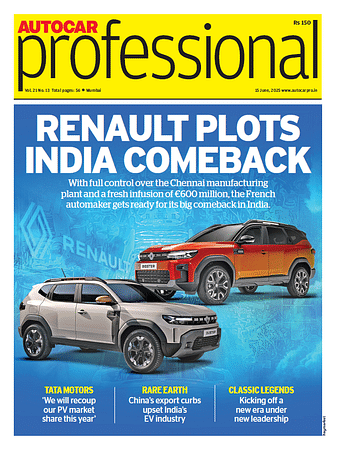'Our approach for the Guru was frugal but we also wanted to provide best-in- class, segment-leading features.'
This segment demands a basic vehicle with laden weight and priced competitively because most truck buyers drive the vehicle themselves.
Anuj Kathuria, president, Global Trucks, Ashok Leyland speaks to Kiran Bajad on ICV segment, key innovations and challenges for the Guru’s development team.
What led to the development of the Guru?
In 2010-11, we had a limited presence in the ICV segment — just a 6 percent market share — with our Ecomet platform. This segment has been growing significantly and we wanted to have a bigger presence in it. That is why we decided to develop a completely new vehicle. As part of this strategy, we launched the Boss in 2013 as a premium product but there was a need for a basic product catering to the value segment in the market.
How you define the value segment and the application the vehicle is used for?
This segment demands a basic vehicle with laden weight and priced competitively because most truck buyers drive the vehicle themselves. They seek better fuel mileage, higher payload and reliability along with improved tyre life from the vehicle. The major application of the Guru is for transportation of white goods, e-commerce, refrigerated trucks and market loads.
What were the key innovations for the Guru?
Our entire approach for the development of the Guru was frugal but we also wanted to provide best-in- class, segment-leading features. There are many innovations including a three-cylinder engine against the industry norm of a four-cylinder; this has helped us provide higher fuel economy and also reduce vehicle weight. By positioning the hand brake on the right-hand side, the Guru gets a full-flat driver seat for sleeping purposes. We achieved major weight reduction in the engine, frame, suspension and chassis; this has helped reduce 150kg and enabled additional payload.
What was the key challenge for the Guru’s development team?
Usually, product development time is 36 months but our team has developed the Guru in half the time — barely 18 months. The challenges were keeping costs in control and delivering a quality product in the shortest time.
I attribute the Guru’s success to teamwork and excellent coordination between cross-functional teams. Also, we had involved all our suppliers at an early stage of product development.
(This interview was first published in the August 1, 2017 print edition of Autocar Professional)
RELATED ARTICLES
'No Question of Us Being Late' - Suzuki India on e-2Wheeler Market
Suzuki Motorcycle India believes its EV entry is timely as the market is now mature enough to grow off genuine demand ra...
'India Can Become a Major Pillar for Us' - Marquardt Group
Björn Twiehaus, CEO of Marquardt Group, and Vishal Narvekar, the company's India GM, share their outlook on the Indian m...
Luxury Car Market to Slow in 2025: Mercedes-Benz Sees Flattish Numbers
In Jan to March of 2025, the market may witness its slowest growth since COVID-19, and if the weakness continues, the se...





 02 Sep 2017
02 Sep 2017
 7821 Views
7821 Views





 Angitha Suresh
Angitha Suresh


 Darshan Nakhwa
Darshan Nakhwa

 Prerna Lidhoo
Prerna Lidhoo

